Buying psychology: what makes people buy from an ecommerce website?
Everything we do is driven by psychology.
Understanding what triggers your customers to buy from you and implementing these changes on your ecommerce website can mean huge rewards for your business in terms of additional sales and revenue.
But what are these ecommerce triggers behind the psychology of buying online?
This article aims to help you connect more with your customers’ buying behavior, so you can make the changes needed to achieve a high-converting website that keeps customers coming back time and time again.
Human psychology behind buying online – Fogg’s Behavior Model
Why would anyone want to buy from you?
Yes, you may have a great product, but great products also have plenty of competition.
You need to be able to identify what gets customers to buy, to buy now and to buy from you.
According to Doctor Fogg’s Behaviour Model, everyone relies on three basic elements:
- Motivation
- Ability
- Triggers
All three stages are important and affect whether the consumer is going to purchase or not.
Motivation falls into three categories: sensation, anticipation or social belonging.
These are the motivators you should focus your marketing efforts around when you are trying to explain to the consumer why they should buy from you.
What will they get out of it? How will your product benefit them and in what way?
Attracting consumers to your website is really important, but if they do not have the ability to buy, they’re simply not going to become a customer.
Ability is key to a high-converting website and refers to factors such as financial ability; do you have adequate payment options? Knowledge of product; do your descriptions do your products justice? And time required to purchase; does your website run smoothly and quickly?
Finally, something has to happen in order to prompt the consumer to take action and commit to the purchase there and then.
These triggers tend to fall under advertising and take the form of call-to-action buttons, Facebook ads, website pop-ups and so on.
If you can cater to your consumers’ motivation, ability and triggers to buy, you will significantly increase your chances of making the sale.
The anatomy of a high-converting ecommerce website
Piers Thorogood, from We Make Websites, spoke recently at our LinnExpert Meet Up London on the anatomy of a high-converting website.
He believes this can be broken down into four pillars:
- Desire
- Trust
- Ease
- Stickiness
As well as these pillars, check out our article on the 9 questions you need to ask about your ecommerce website.
1. Desire
Making people want what you’re selling can be easier said than done.
Visual design plays a pivotal role here.
Product photography and videography must be of the highest quality and compel the consumer to want to engage with your content through the art of storytelling.
Take this example from H.Samuel:
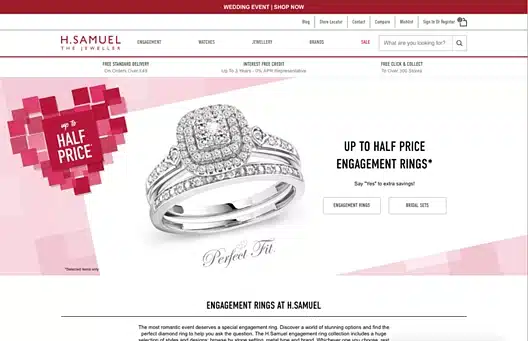
It appears to follow the book when it comes to best practice ecommerce layout and functionality – all the key messaging is clearly displayed, alongside call-to-action buttons and a large photograph of the product with plenty of white space.
However, it doesn’t make you want the product. This design may be functional, but it doesn’t create an emotional response within the visitor.
Compare this to Couple, a relatively new jewelry brand, who have taken a very different approach.

Instead of using static photos of their products with little context, Couple uses lots of lifestyle imagery so visitors can actually see how their jewelry would look in real life.
They use a color palette that resonates with their target market and the layout of their website is clean, uncluttered and aesthetically-pleasing.
Creating relevant, useful and engaging content for your audience is also incredibly important for building a sense of desire among your potential new customers.
In fact, more and more brands are becoming publishers.
More specifically, you want to be producing great content for two reasons:
- To attract new website visitors
- To keep customers coming back for more
If you can understand what your audience are struggling with, what they’re interested in and what they care about, you can create content that serves a purpose.
Once they’re on your website, you need to keep them there. Things to consider here include clever internal linking, call-to-action buttons, downloadable guides, videos, pop-ups etc.
And if you can position yourself as a thought-leader and the go-to reliable resource for your customers, you’ll keep them coming back for more.
That’s not all though.
Encouraging them to subscribe to updates of new content is a sure fire way to boost web traffic every time you publish a new post.
Content does, however, come in many forms, and influencer-related content may be more relevant to your target market than written articles sometimes.
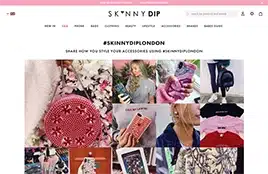
As an example, Skinnydip have created the hashtag #skinnydiplondon and compiled a collection of photos taken by influencers in their niche showing consumers how they style Skinnydip products.
Fans of Skinnydip follow these influencers because they aspire to be like them, dress like them and have similar lifestyles to them.
Therefore, this type of content resonates with their visitors and helps to create that feeling of desire.
Now consider your product.
What problem will it be solving? How will it improve their life? Is it a good value proposition?
Combining techniques such as content marketing and influencer marketing are highly effective in creating the feeling of desire among your visitors.
Everything needs to come together to convince the prospect they need to buy your product – from your website and right now.
2. Trust
If potential customers don’t trust you, they’ll buy from someone else. It’s as simple as that.
First impressions count.
As soon as a visitor lands on your site, they will make a judgement as to whether or not they trust you, and the first thing they’ll see is your website design.
“Design is the silent ambassador of your brand” – Paul Rand.
Your website must be professional and provide a usable online experience to your visitors that looks good and is highly engaging.
In fact, a study carried out by Adobe found that 38% of people will leave a website if the layout or design is unattractive (2015) – that’s a lot of traffic to lose.
So good design builds trust, but what else can you do?
Include a social proof.
More specifically, use third-party influence to try and reinforce to the prospect the trustworthiness of your brand.
Work with some really well-know businesses? Make sure you include them on your website.
Or maybe you have some brilliant testimonials? Showcase them on your homepage so visitors can read what others are saying about you straight away.
Customer reviews are a hugely important part of building trust.
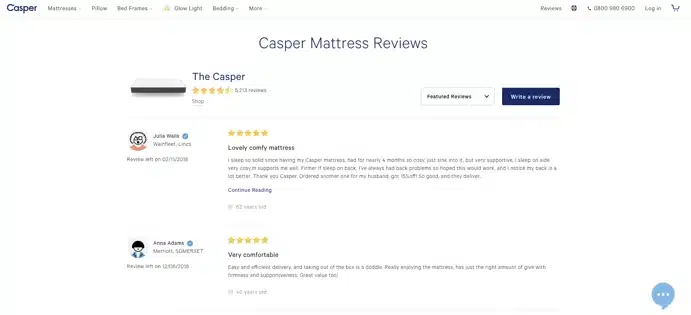
After all, “92% of people will trust a recommendation from a peer, and 70% of people will trust a recommendation from someone they don’t even know.” – Nielsen Global Trust Survey.
With this in mind, make sure your customer reviews are easily accessible across your website and on your product pages.
Using Trust Pilot? Add the widget to your website.
Customer photos can also make a huge difference as to whether a prospect trusts your brand or not.
Beautiful, professional photography is vital to generating desire and goes a long way in building trust too, but what will really seal the deal for a prospect thinking of buying, is seeing the same product in the hands of a real customer, just like them.
If the product still looks and works as well as described on the website in real life, then the prospect is more likely to trust the claims your brand makes and buy from you.
Incorporating customer photos is a great way to build trust, but they must be used in the right way.
Include customer photos where it would be appropriate to back up your product, maybe alongside customer reviews or at the bottom of the product page.
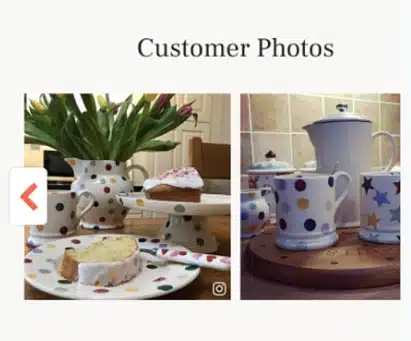
Could you create your own hashtag specifically for customers sharing how they’re using your products and pull this feed through from Instagram for example?
Another way to get in front of a large audience and build trust on your website, is to work with successful publications relevant to your industry.
This can be really powerful, but you want to be working with the right publication in order for your message to be heard and for your readers to make that trust association.
First thing’s first, decide which magazines, online publications and newspapers would be best for your business.
Then figure out where your products would sit best e.g. which issue, which column, which feature etc.
Now it’s time to pitch your story.
The key here is to tell an engaging and relatable story that connects to the audience of the publication.
People want to buy products that tell stories and editors want to promote products that their readers will relate to on a personal level.
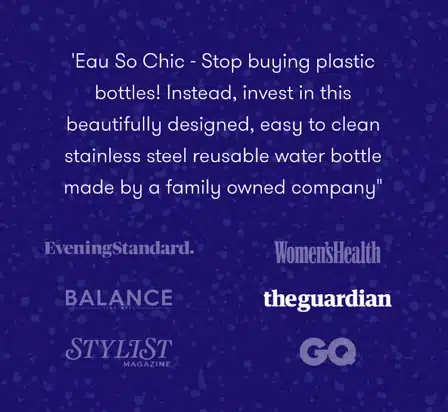
And when you do get featured, make sure to include this on your website where possible!
With the takeover of social media, influencer marketing has risen to become a highly effective means of reaching wider audiences.
By recruiting the influencers your audience looks up to and trusts, they’re more likely to trust your brand and as a result want to own your products above your competitors’.
Another important aspect of building trust among your audience, is being able to show that you’re real.
Just like consumers connect to products that tell stories, they connect to brands that aren’t afraid to let their audience in.
Being open and honest as a brand will help your readers relate to you on a personal level.
Your ‘About’ page is vital here.
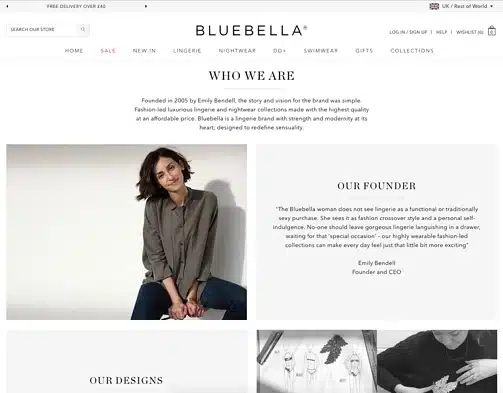
Allow your readers to get to know the members of your team, after all these are the people they are potentially buying from – they need to be able to trust them before parting with their cash.
Help them understand why you started the business, what problems were you hoping to solve? What was the journey like and what do you stand for as a business?
According to Forbes, millennials in particular feel strongly about affecting change. They expect businesses to be socially responsible.
How is your business contributing to important causes like reducing global warming, ensuring gender equality or raising money for charity?
Share this with your readers in order to establish yourself as a brand that cares about more than just selling, and one that its customers can trust and identify with its values.
So, let’s say you’ve done enough to convince the prospect to hit buy.
That trust will be short-lived if they can’t easily return the product if it’s not right for them.
In fact, 67% of shoppers check the returns details before making a purchase, so returns can really make or break your buyers’ trust.
Make sure your returns process is as easy and hassle-free as possible and promote this clearly on your website.
And lastly, you need to prove to your visitors that your website is safe to buy from. Check out our article on trust seals and SSL certificate providers (2020).
3. Ease
Now they trust you, you need to remove any other barrier from them making the purchase.
Make buying from you easy.
You don’t want a broken link or a confusing navigation bar to be the reason you lose out on the sale.
First of all, you need to ensure your website is simple to navigate around. If visitors want to find something, they want to find it now or they’ll look elsewhere.
A study by EyeQuant on 300 ecommerce websites showed that cleaner, less-cluttered websites have dramatically lower bounce rates.
This is pretty obvious…
If you’re browsing for a holiday cruise online and come across this website…
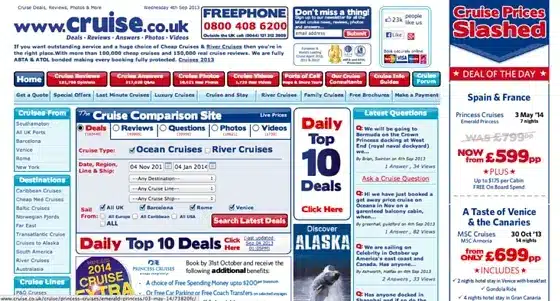
What’s the first thing you’re going to do? Bounce straight back off it.
It’s just far too busy that you don’t know where to look, and with so many other options out there, you don’t need to spend time trying to find what you’re looking for when another website could serve your needs straight away.
For this reason, you need to ensure your website is as easy to navigate around as possible.
You want to provide the information and/or the products your readers are looking for and serve them the content they were hoping to find when they clicked on your website in the search results.
If your website can match the searcher’s intent, you’ll not only keep prospects on your site for longer and hopefully turn them into customers, but you’ll be helping your search ranking too, as low bounce rate and high searcher’s intent are extremely important ranking factors to search engines like Google.
As well as simple navigation, your website’s search facility is a really important place to remove any friction and make finding what you’re looking for as easy as possible.
Make sure your search is predictive, meaning it not only finds what the prospect is after but also suggests similar products that may meet their needs even better.

Make sure it’s powerful, meaning it works perfectly and it works instantly.
And lastly, make sure it’s filterable, meaning the prospect can apply relevant filters to reduce the search results down to only what they’re interested in e.g. black midi dresses.
In summary, finding products on your website should be simple.
No one likes a brand that hides things. It makes you look untrustworthy and adds friction to the buyer’s journey when they’re trying to find answers to their questions.
Avoid this friction by answering potential questions upfront.
Make sure you have a well filled out FAQ section on your website and all the relevant information about the product on the product pages.
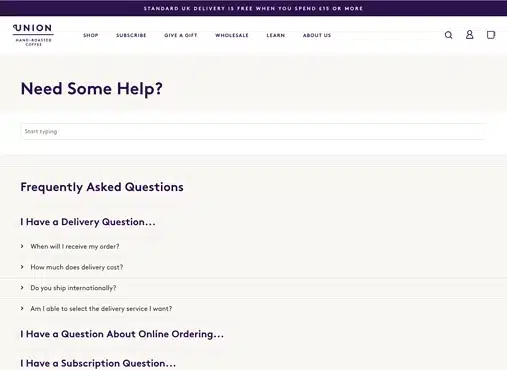
You could even go one step further and have a live chat service for customer support if you have the capacity to do this – just make sure you have enough people to man this properly.
Never hide any costs and always show the full costs upfront so the buyer knows what they’re paying before they reach the checkout.
“56% of online shoppers abandoned their online basket because they were presented with unexpected costs at the checkout.” – Shopify.
For most brands, shipping will be the problem here.
If possible, having free shipping will completely avoid this problem, but if you can’t offer free shipping for all, set it at a threshold.
And if you can’t do that just make sure it’s visible on the product page or as early as possible.
As well as unexpected shipping costs, payment can be another dangerous hurdle for the buyer.
The payment process needs to be painless.
In order to remove as much friction from the checkout as you can there are a number of features to include:
- Guest checkout – remove the need to fill out long forms and create an account with you
- Multiple payment options – give the buyer different options to suit them
- Local payment types e.g. Alipay
- Mobile payment types e.g. Google Pay
- Buy now pay later option – remove the need to pay now at all so they can get the product they want and pay for it at a time that works for them
Ensuring the buying process on your website, from navigation to purchase, is as smooth as possible, will reduce your bounce rate and customer drop-offs, and in turn increase your number of sales.
Many of these changes are fairly small but will make a huge difference in reducing friction and making buying from you easy.
4. Stickiness
Stickiness is all about keeping your customers coming back to buy more.
According to Invespcro, it’s five times more expensive to get a new customer than retain an existing one.
Your customers are your biggest advocates, you can’t afford to forget about them after that sale has been made.
First things first, providing exceptional customer service is key.
Customer service is the number two most cited factor in customers’ loyalty – the only thing more important than this is the actual product you’re selling.
Really important aspects of customer service include:
- Fast, reliable shipping
- Easy, free returns
- Easy access to support
- Engagement on social
The last one is just as important as the rest.
People will reach out to you on social whether you like it or not.
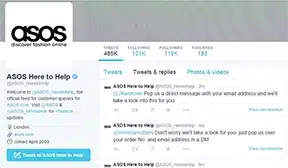
Make sure you engage with them and provide useful advice, so they’ll want to shop with you again.
Keeping your customers coming back because they were able to return items easily or have their questions answered quickly by support is the most powerful.
Aside from the product itself, this is what people are going to talk about. You want their post-sale experience to be something to share for the right reasons.
This is what is going to keep them coming back to your website and buying from you time and time again.
You may however also want to try incentivised loyalty programs – but be aware this strategy doesn’t work for every brand.
If you sell low cost, fast-moving products for example, you may want to explore a points system where each purchase earns a certain number of points which could be redeemed as a voucher.
Lastly, you want to be providing a personalized experience for your shoppers.
Once someone has shopped with you, you know lots of information about them.
Use this information to personalize their experience next time they shop with you. This will result in higher conversion rates for repeat customers.
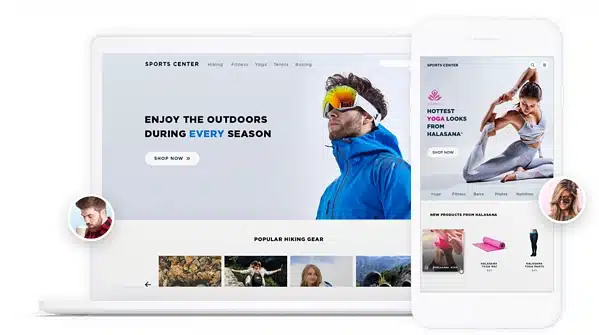
Could you suggest products to purchase based on their previous order? Serve them relevant blog content, unique discount codes or even just greet them with their name?
This will be really effective in re-engaging them and securing repeat business.
“50% of shoppers say they’re more likely to use a retailer again if they’re presented with personalized offers and information.” – Pure 360.
Tools like NOSTO could help here.
No longer are you just offering personalized products, the content can be tailored too.
Returning customers can have their whole experience tailored to them, which is incredibly powerful.
So, it comes down to four questions…
- Does your website make the case for your product being essential?
- Will new visitors trust your website?
- How close to zero friction is your purchase path?
- And what are you doing to make customers keep coming back?
If you can get these things right on your website, you’ll have the best possible chance of converting visitors into customers, time and time again.
Hopefully this article has given you a few ideas on how to improve the conversion rate of your ecommerce website and gain a better understanding of how your customers shop online.